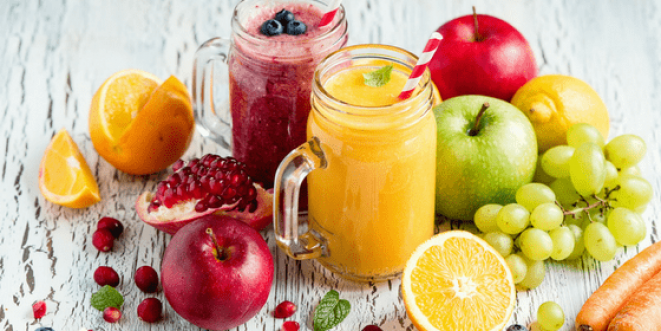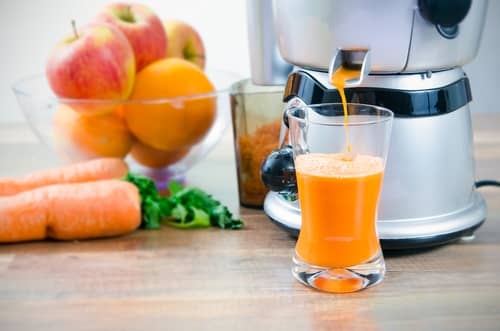Juices Or Smoothies: What’s Best for Health?
By Cordialis Msora-KasagoPublished: October 14, 2014

“What’s best for health? Juices or smoothies?” That is a question that nutritionists are constantly answering, especially with the recent rising trend of juicing and blending. To answer this question, we must first explore the difference between the two.
Juicing for Juice
Juicing involves the separation of the water and nutrients in fruits and vegetables from the solid, fibre containing pulp. Oftentimes, the juice is consumed while the pulp is discarded.
Proponents of juicing argue that it is the perfect food for fasting and detoxing because the removal of pulp results in a juice that is not only high in nutrients but also readily absorbed by the body. These properties promote bowel rest while boosting cellular nutritional intakes. Although this is a widely publicized benefit, at present there remains a lack of scientific research to substantiate the claim.
In our modern day society of “grab-what-you-can-and-eat-it-on-the-run” while avoiding anything that grew in the earth, juicing can be a sure way to get the minimum recommended five servings of fruits and vegetables a day.
It, however, comes with its perils. Since produce does not provide all the nutrients needed for optimal health, long-term juicing, in which no other foods are consumed can result in severe malnutrition. Also, due to the lack of satiety promoting fibre and protein, juice-only diets can leave one constantly feeling hungry, triggering an increased consumption of juice and the consequent excess calorie intake.
In addition, since fruits and vegetables must be pulverized and separated, special moderate to highly priced juicing equipment may be needed. Juicers may also be bulky, taking up valuable kitchen counter service and cumbersome to clean.

Blending for Smoothies
A smoothie is a beverage made by blending at least two fruits and/or vegetables oftentimes in a simple countertop or immersion blender. Unlike a juice in which the fibre is removed, a smoothie contains all parts of the entire fruit or vegetable.
In addition, to produce, smoothies may contain other foods to boost their nutritional profile. Greek yogurt, milk, oatmeal, peanut butter and soya milk are just a few of the foods that are commonly blended to create the ultimate well balanced ‘grab ‘n go” meal or snack.
Nutrient boosters such as chia, flax and protein powder can also be added to make the beverage more nutritious. The fibre and added protein promote satiety while curbing cravings and hunger pangs.
MORE: Banana-Pineapple-Bitterleaf Smoothie
Although the ability to add nutrient-dense foods is a great advantage to making smoothies, it has its downside. If one does not carefully select the ingredient list, it is very much possible to pack in loads of calories that tip calorie levels to levels as high as a cheeseburger meal. Reduce this risk by avoiding added high fat, high added sugar foods such as ice cream, full-fat dairy and excess amounts of otherwise healthy avocados.
Which is best for you?
When it comes to fulfilling the doctor’s orders to rev up your fruit and vegetable intakes, both juices and smoothies fill the prescription. If you are looking for a meal replacement, a well-planned smoothie offers the best chances for a meal in a cup.
MORE: Start Your Morning Right With The Exotic Goddess Green Smoothie
Here’s to your health! Like what you're reading? Sign up for our free newsletter and never miss a post! Plus get a FREE digital version of our Issue No.10 with sign up.

- 5 Foods That Reduce Your Risk For Cancer - April 28, 2015
- 5 Diet Blunders That Are Increasing Your Risk For Cancer - April 28, 2015
- Defeating Diabetes: The Best Way to Beat It Is to Never Develop It - November 4, 2014
- Planning Vegetarian Meals That Meet Your Nutritional Needs - June 17, 2014
- Clean Eating: What You Need To Know - September 16, 2015
- Want To Make Better Food Choices? Read The Nutrition Label! - August 20, 2014
- Breastfeeding: The Winning Goal For Life - August 1, 2014
- Juices Or Smoothies: What’s Best for Health? - October 14, 2014
- 11 Delicious Ways to Eat More Beans, Peas and Lentils - January 19, 2016
- Moin-Moin: To Peel Or Not To Peel The Beans - July 16, 2014













